Category: Neurology/Neurosurgery
Neuropathic Pain (WHAT DO I DO NOW PAIN MEDICINE)
Neuropathic Pain (WHAT DO I DO NOW PAIN MEDICINE)
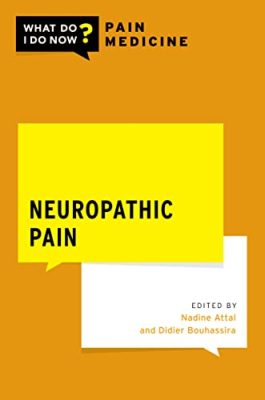 Neuropathic pain is one of the most common, debilitating, costly, and difficult to treat categories of chronic pain conditions characterized by a lesion or disease of the somatosensory nervous system. Neuropathic Pain, part of the What Do I Do Now? Pain Medicine series, brings together in one volume 45 cases which expertly explore the diagnoses, assessment, management, and treatment of various types of neuropathic pain including less common and complex cases.
Neuropathic pain is one of the most common, debilitating, costly, and difficult to treat categories of chronic pain conditions characterized by a lesion or disease of the somatosensory nervous system. Neuropathic Pain, part of the What Do I Do Now? Pain Medicine series, brings together in one volume 45 cases which expertly explore the diagnoses, assessment, management, and treatment of various types of neuropathic pain including less common and complex cases.
Treatment of neuropathic pain requires skillful assessment and management. Neuropathic Pain provides an engaging collection of thought-provoking cases which clinicians can utilize when they encounter challenging situations. The volume is also a self-assessment tool that tests the reader’s ability to answer the question, “What do I do now?”
Neurosurgery (MasterPass) 2nd Edition
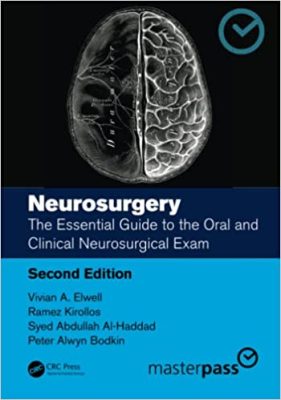
This new edition of Neurosurgery: The Essential Guide to the Oral and Clinical Neurosurgical Exam provides a concise and practical guidebook of the core knowledge and principles for the International and Intercollegiate FRCS Specialty Examination in Neurosurgery. It is a vital resource for the American Board of Neurological Surgery (ABNS) and other neurosurgical examinations around the world.
Written by neurosurgeons at the top of their field and based on new guidelines, this book takes students through how to succeed in the FRCS neurosurgery exams and provides an overview of crucial short and intermediate cases designed to mirror the exam’s testing of a candidate’s clinical knowledge, diagnostic acumen, investigation and interpretation, treatment options and taking consent.
Including 72 vital online revision flash cards, covering critical and diverse examination cases from trauma to paediatric spine exams, this edition also contains crucial guidance to Vivas on the following:
- Operative surgery and surgical anatomy
- Investigation of the neurosurgical patient
- The non-operative clinical practice of neurosurgery
This book is a must-read for candidates preparing for the final Intercollegiate Specialty Examination in Neurosurgery (UK), International FRCS Specialty Examination in Neurosurgery (UK) International FRCS Specialty Examination in Neurosurgery as well as the American, Canadian, European and Australasian exams. In addition to helping candidates pass their final exams, the book provides wonderful insight into Neurosurgery for Medical Students, Surgical Residents and Neurosurgical Consultants.
Language and Neurology: Alzheimer’s Disease 1st Edition
Language and Neurology: Alzheimer’s Disease 1st Edition
Differential Diagnosis in Neurology and Neurosurgery: A Clinician’s Pocket Guide 2nd Edition
The Brain and Pain: Breakthroughs in NeuroscienceThe Brain and Pain: Breakthroughs in Neuroscience
The Brain and Pain: Breakthroughs in Neuroscience
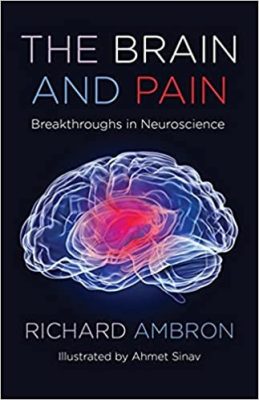 Pain is an inevitable part of existence, but severe debilitating or chronic pain is a pathological condition that diminishes the quality of life. The Brain and Pain explores the present and future of pain management, providing a comprehensive understanding based on the latest discoveries from many branches of neuroscience.
Pain is an inevitable part of existence, but severe debilitating or chronic pain is a pathological condition that diminishes the quality of life. The Brain and Pain explores the present and future of pain management, providing a comprehensive understanding based on the latest discoveries from many branches of neuroscience.
Richard Ambron―the former director of a neuroscience lab that conducted leading research in this field―explains the science of how and why we feel pain. He describes how the nervous system and brain process information that leads to the experience of pain, detailing the cellular and molecular functions that are responsible for the initial perceptions of an injury. He discusses how pharmacological agents such as opiates affect the duration and intensity of pain. Ambron examines new evidence showing that discrete circuits in the brain modulate the experience of pain in response to a placebo, fear, anxiety, belief, or other circumstances, as well as how pain can be relieved by activating these circuits using mindfulness training and other nonpharmacological treatments. The book also evaluates the prospects of procedures such as deep brain stimulation and optogenetics.
Current and thorough, The Brain and Pain will be invaluable for a range of people seeking to understand their options for treatment as well as students in neuroscience and medicine.
Split Cord Malformations
Split Cord Malformations
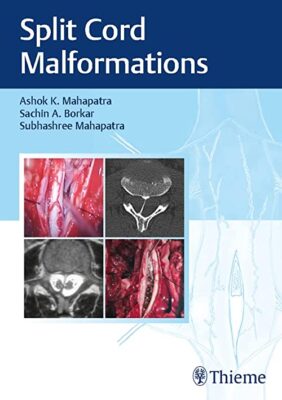
Split Cord Malformations
Split Cord Malformations is written with the purpose of providing a complete overview of the management of this rare condition. The book benefits from the rich experience and expertise of its contributing authors in the management of spinal dysraphism in general and split cord malformation in particular. The book highlights the way a SCM patient must be treated to get excellent results. This book has 14 chapters dealing with all aspects of SCM ranging from embryology, diagnosis, and management.
- Clear depiction of the types of Split cord malformations.
- Various classification systems of SCM are covered along with their surgical implications.
- Dorsoventral spur, its pathogenesis, and treatment nuances are discussed in detail as it is a special condition needing special care to prevent spinal cord damage.
- Management of SCM type I and type II needs specific attention as they are of different nature. The explanations offered in the book cover both adequately.
- Protocol for SCM management is discussed along with long-term outcome.
- It also showcases a separate chapter on complex SCMs. The associated pathology like meningomyelocele, lipoma, thick filum, and congenital tumors must be managed on their own merit. Hence, proper diagnosis of the complex SCM helps in planning surgical strategy.
DOWNLOAD THIS MEDICAL BOOK
Video Atlas of Neurophysiological Monitoring in Surgery of Infiltrating Brain Tumors
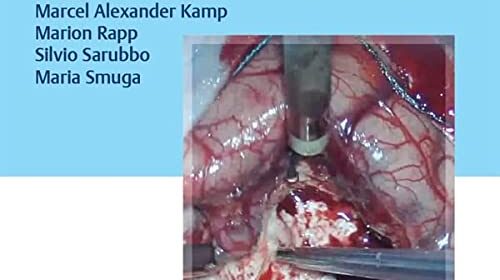
Video Atlas of Neurophysiological Monitoring in Surgery of Infiltrating Brain Tumors
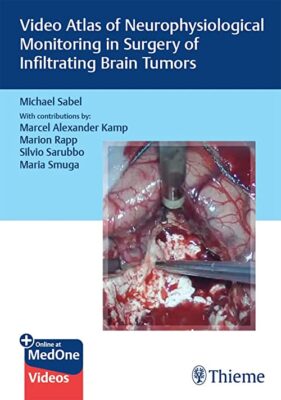
Video Atlas of Neurophysiological Monitoring in Surgery of Infiltrating Brain Tumors
The surgical treatment of infiltrating brain tumors is an extremely challenging and often highly rewarding facet of neurosurgery. The decision-making process involves deeply human interconnections with patients and relatives, cutting-edge neuroscience, and fascinating technology. Video Atlas of Neurophysiological Monitoring in Surgery of Infiltrating Brain Tumors by renowned oncological neurosurgeon Michael Sabel and esteemed contributors demonstrates the practical applications of neurophysiological monitoring to achieve safe removal of infiltrating brain tumors in asleep and awake settings.
Organized in three primary parts, the book starts with an introduction including a discussion of the impact and challenges posed by infiltrating gliomas and cerebral metastases and the philosophy behind supramarginal resection. The second part covers critical theoretical components including relevant anatomy, nervous system electricity and fields, transcranial monitoring methods and principles, and direct cortical and subcortical mapping including awake brain surgery. The final part provides insightful, practical guidance on decision making, monitoring set-up, planning of surgical cases, and a summary of accompanying videos.
DOWNLOAD THIS MEDICAL BOOK
Febrile Seizures: New Concepts and Consequences 2nd Edition
Febrile Seizures: New Concepts and Consequences 2nd Edition
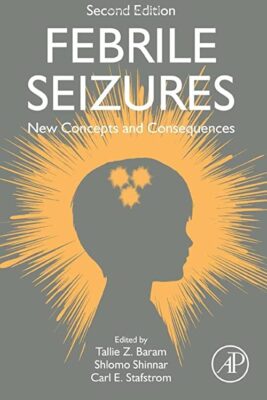
Febrile seizures are the most common seizures in infants and children worldwide, This fact provides strong impetus to study and understand them and their consequences, and consider their treatment. These topics were the focus of the first edition of this book.
FOR MORE BOOKS VISIT EDOWNLOADS.ME
The 20 years since the publication of this first edition have witnessed an explosion of new information about febrile seizures, meriting this new edition. Key advances have been made in the genetics and neurobiological underpinnings of febrile seizures and especially the very long fever-related seizures called febrile status epilepticus. The role of neuroinflammatory factors in the emergence of these seizures and their consequences, the demonstration of unique clinical and neuroradiological aspects of febrile status epilepticus, and the prospect of predictive (bio)markers to identify and characterize cognitive and epilepsy outcomes are exciting and important. In this edition, the authors and editors tackle these developments in chapters addressing the questions of parents, physicians, allied health care professionals and basic and translational scientists.
DOWNLOAD THIS MEDICAL BOOK

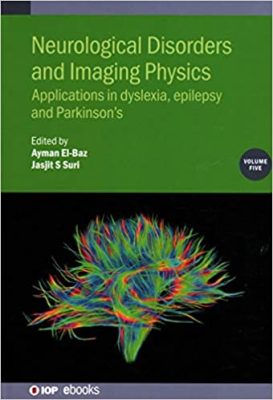
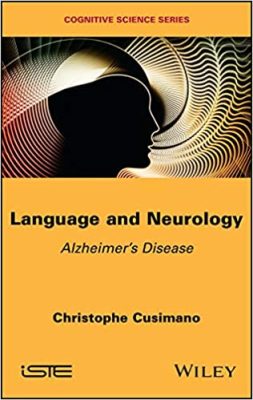 This book questions the relationship and compatibility between current beliefs in neurology and contemporary textual linguistic theories, interpretative semantics and discourse analysis.It begins with a critical examination of the screenings for Alzheimer�s type dementia through cognitive testing, particularly screenings where language is used. It then analyzes the various linguistic properties (morphological, syntactic and semantic) of the speech of Alzheimer�s patients, which can be troubling for both caregivers and their environment in general.
This book questions the relationship and compatibility between current beliefs in neurology and contemporary textual linguistic theories, interpretative semantics and discourse analysis.It begins with a critical examination of the screenings for Alzheimer�s type dementia through cognitive testing, particularly screenings where language is used. It then analyzes the various linguistic properties (morphological, syntactic and semantic) of the speech of Alzheimer�s patients, which can be troubling for both caregivers and their environment in general.
 This book questions the relationship and compatibility between current beliefs in neurology and contemporary textual linguistic theories, interpretative semantics and discourse analysis.It begins with a critical examination of the screenings for Alzheimer�s type dementia through cognitive testing, particularly screenings where language is used. It then analyzes the various linguistic properties (morphological, syntactic and semantic) of the speech of Alzheimer�s patients, which can be troubling for both caregivers and their environment in general.
This book questions the relationship and compatibility between current beliefs in neurology and contemporary textual linguistic theories, interpretative semantics and discourse analysis.It begins with a critical examination of the screenings for Alzheimer�s type dementia through cognitive testing, particularly screenings where language is used. It then analyzes the various linguistic properties (morphological, syntactic and semantic) of the speech of Alzheimer�s patients, which can be troubling for both caregivers and their environment in general.
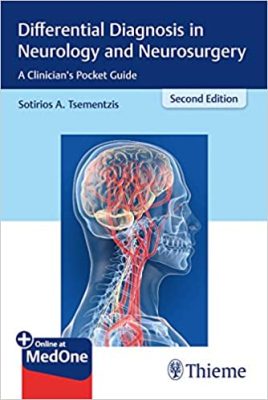 Now in a greatly expanded and updated new edition: The essential pocketbook for rapid and correct differentiation and interpretation of signs and symptoms of neurological and neurosurgical diseases and conditions.
Now in a greatly expanded and updated new edition: The essential pocketbook for rapid and correct differentiation and interpretation of signs and symptoms of neurological and neurosurgical diseases and conditions.